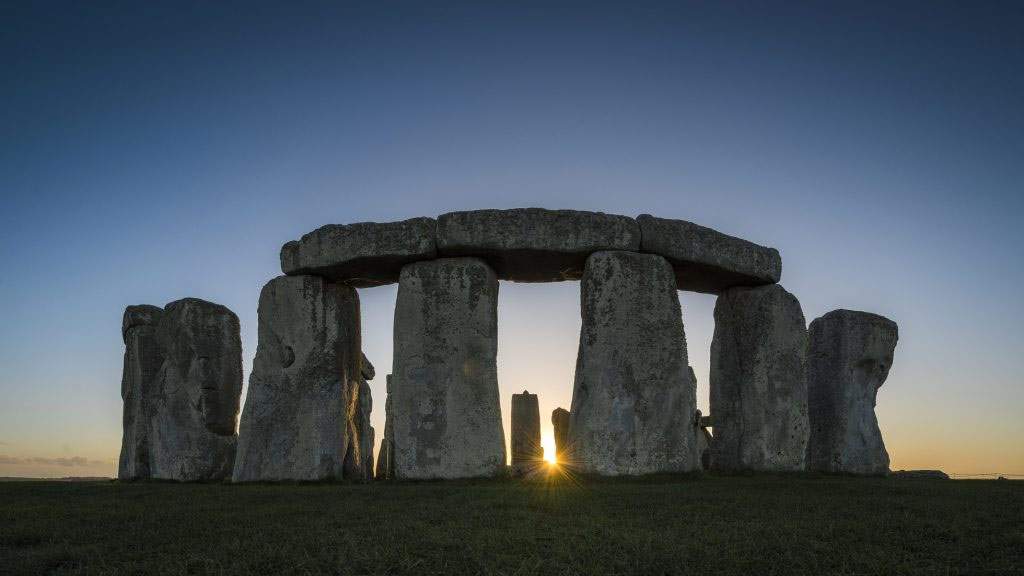From Feb. 17 to July 17, 2022, the British Museum in London is dedicating a major exhibition to Stonehenge: titled The world of Stonehenge, curated by Jennifer Wexler and Neil Wilkin, the exhibition will display 400 objects spanning a period from 4,000 to 1,000 B.C. to tell the story of Britain’s most famous archaeological site. Stonehenge, nestled in the Wiltshire countryside, is the world’s most famous stone circle, a monument that has inspired myths and legends that endure to this day. The goal of the exhibition is to reveal to the public all we know about Stonehenge, shedding light on its purpose, its cultural significance, and the civilization that created it.
Exhibits will include stone axes from the northern Italian Alps, gold jewelry, and examples of early metalwork including the Nebra Sky Disc, the world’s oldest surviving star map. An extraordinarily well-preserved 4,000-year-old wooden hoop, nicknamed “Seahenge,” will also be featured in the exhibition (preserved in King’s Lynn Museum in Norfolk, it is being loaned for the first time-it is the wooden equivalent of Stonehenge). All of these objects offer important clues to the beliefs, rituals and complex worldview of Neolithic people, helping to construct a vivid sense of life for the ancient inhabitants of Europe. Updated with recent archaeological and scientific discoveries, The world of Stonehenge will also present the public with all new information about one of the great wonders of the world, bringing the story of Stonehenge into sharper focus than ever before, the British Museum promises. Stonehenge was built 4,500 years before the Sphinx and the Pyramids of Giza: the exhibition will also have a way of telling the context in which the monument was born, delving into the history of the British Isles five thousand years ago.
Loans will come from 35 institutions in the United Kingdom, Ireland, France, Italy, Germany, Denmark, and Switzerland, and these are mostly objects never before seen in the United Kingdom. Among those on display are two extraordinary gold cone-shaped headdresses: the Schifferstadt headdress from Germany and the Avanton headdress from France. These are objects decorated with elaborate solar motifs that reflect the religious importance of the sun during the era to which Stonehenge dates.Only two other examples of these headdresses have survived, and they were used during ceremonies or rituals, perhaps because they infused the wearer with divine or otherworldly status. Carefully buried alone or accompanied by axes, rather than buried with the deceased, they were apparently held in trust for the community. Similar motifs are found on a belt plate on loan from the National Museum of Denmark. Alongside the international loans, visitors will see some of the most important objects found in the Stonehenge landscape, many now in British museum collections. On loan from the Wiltshire Museum will come the entire treasure trove of objects that accompanied a burial known as the Bush Barrow site. This burial treasure has never been loaned in its entirety before. This tomb, with commanding views of Stonehenge, shows close parallels with richer tombs from northern France, eastern Germany, and even ancient Greece. The exhibition will illustrate these connections. And again, from the Salisbury Museum will come treasures buried with the Amesbury Archer, a man honored with remarkable grave goods after his death. His tomb contained the richest array of objects ever found in a Bronze Age burial site in the United Kingdom, and 39 of these objects (including copper knives, gold ornaments, and flint tools) will figure in the exhibition. The Amesbury Archer was also buried near Stonehenge, but came from the area of what is now Switzerland or Germany.
“To understand the purpose of the great stone monument built on Salisbury Plain,” says Hartwig Fischer, director of the British Museum, “it is essential to consider its contemporary world and the culture of its builders. We are delighted to be able to do so in this unprecedented exhibition. Over 430 exceptional objects have been brought together, objects that are the last and only evidence of sophisticated and ingenious people, and we are grateful to all the funders who made it possible.”
“The mystery of Stonehenge,” says curator Neil Wilkin, “is a source of enduring fascination for every generation that visits or glimpses its distinctive silhouette. This historical exhibition will begin to reveal its secrets by placing this great monument in the context of a period of radical change on these islands and bringing together exceptional objects that shed new light on its significance and meaning. It is an exhibition about the people who built and worshipped the monument, but it is also a story that transcends Salisbury Plain and even Britain and reaches all the way to mainland Europe. The eternal mystery and significance of Stonehenge can only be fully understood by tracing the surrounding world that made it possible.”
Photo: Stonehenge. Copyright English Heritage
 |
| At the British Museum the largest exhibition on Stonehenge |
Warning: the translation into English of the original Italian article was created using automatic tools. We undertake to review all articles, but we do not guarantee the total absence of inaccuracies in the translation due to the program. You can find the original by clicking on the ITA button. If you find any mistake,please contact us.